![]() Add To Cart This Word Template
Add To Cart This Word Template
 Add To Cart Proposal Pack Minimalist #4
Add To Cart Proposal Pack Minimalist #4
 Add To Cart Proposal Kit Professional Bundle
Add To Cart Proposal Kit Professional Bundle


Key Takeaways
- One-time License, No Subscriptions: Pay once and use Proposal Kit forever with an up-front price lower than monthly services over time.
- Best Template Flexibility: Start with a proven Research Funding Request Proposal and customize every section, logo, and color to fit your brand and project scope.
- Instant Access: Download immediately and open the sample proposal right away with no waiting, no onboarding delay.
- Ready-Made Structure: See a complete, real-world example (executive summary, scope, schedule, budget, and more) you can mirror for your project. Get a Proposal Pack or Professional package and use the AI Writer to create custom tailored samples or complete first drafts.
- Fully Editable Documents: Replace text, sections, and branding in minutes - no special software skills required.
- Step-by-Step Help: The Proposal Pack Wizard training mode, documentation, and videos guide you through customizing every section so you do not get stuck.
- Built-In Pricing and Quotes: Automate line-item quotes, totals, and taxes from a database, and insert tables/charts so your pricing is clear and consistent.
- Clear Pricing and Bundles: Choose a single industry pack or the Professional bundle for straightforward options that keep costs predictable as your needs grow.
How to write your Research Funding Request Proposal
You can create your customized editable variation of this document using Proposal Kit. Follow these steps to get started.
 DOWNLOADABLE, ONE-TIME COST, NO SUBSCRIPTION FEES
DOWNLOADABLE, ONE-TIME COST, NO SUBSCRIPTION FEES
Proposal Pack includes everything you need to get started now
- This sample proposal plus
- Library of all 200 samples
- Library of editable templates
- All templates in this design
- Basic contracts and invoices
- Financial calculators
- Wizard proposal software
- How to Write a Proposal e-books
- Customize with your logo
Screenshots of 4 of 9 pages of this sample
Click the PDF View link above to see more. The complete sample is included in every Proposal Pack and the included Wizard software can build you an editable version in Word that will be in the design theme you purchased. You can purchase a different design theme than the sample is illustrated with.
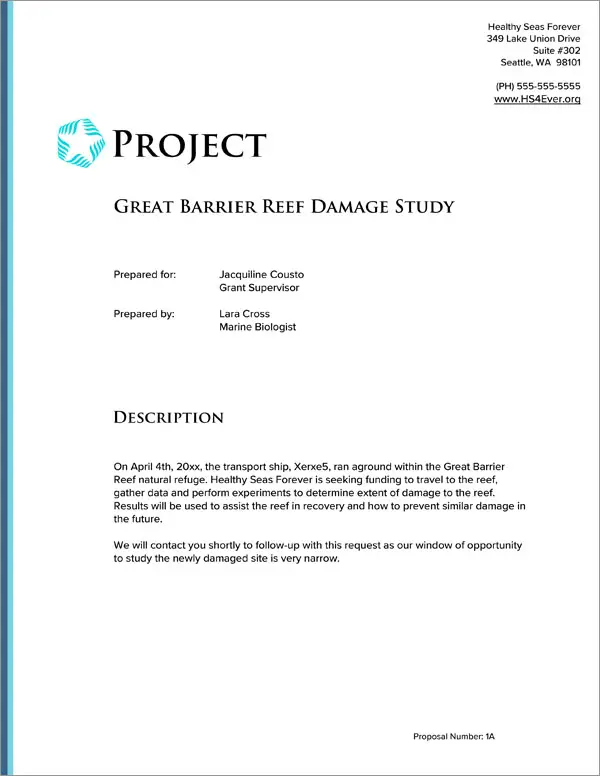
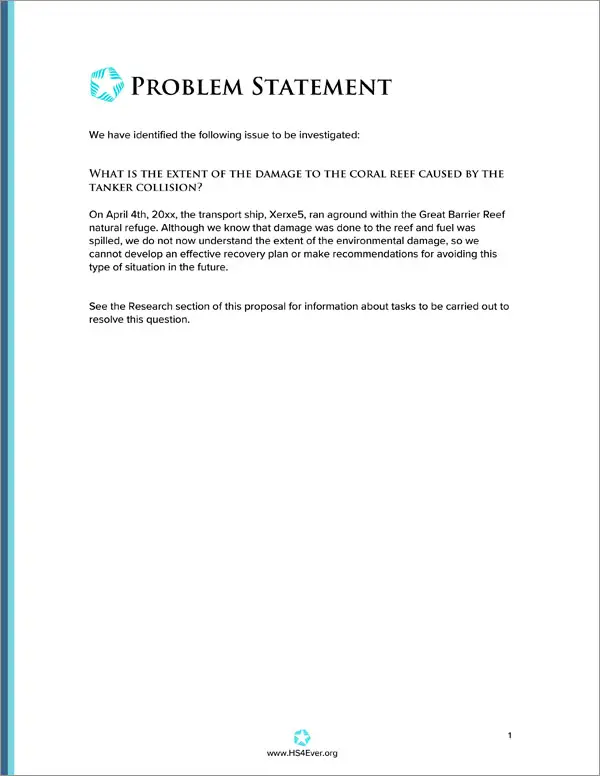
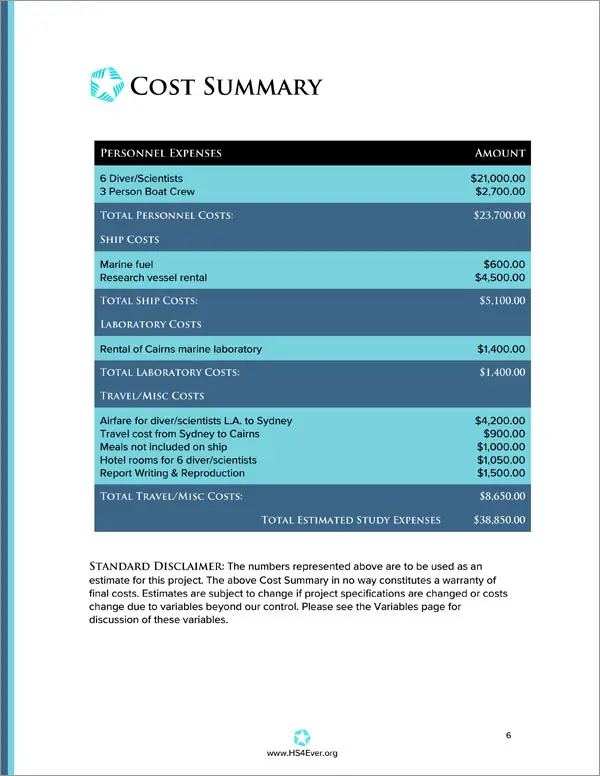
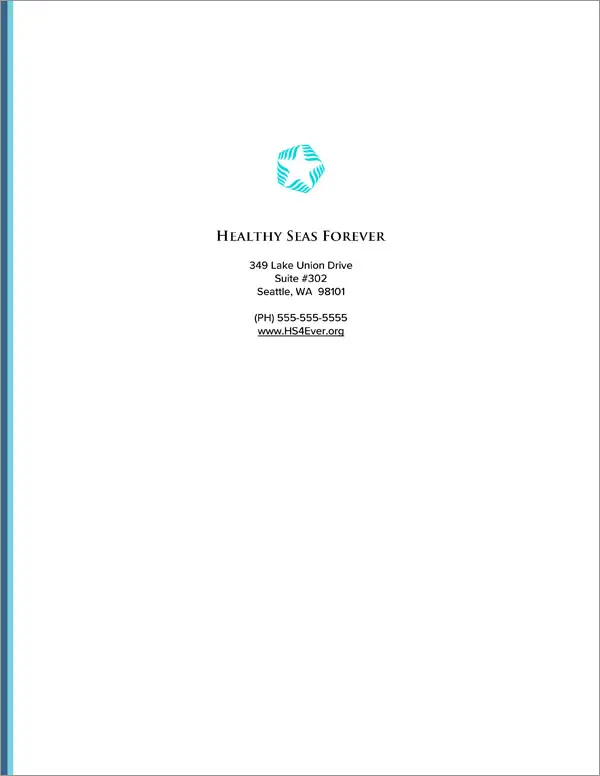
1. Get a Proposal Pack such as Minimalist #4
This sample was created using the design theme Proposal Pack Minimalist #4. You can recreate this same sample using any of our Proposal Pack design themes and have it customized for your business.
We include this sample in PDF and editable Word format chapters that can be customized using the included Wizard software when purchased with a Proposal Pack or the Professional Bundle.
To create your customized proposal using your logo and colors, get Proposal Pack for Any Business. We include this sample in every Proposal Pack.
2. Download and install after ordering
Once you have ordered and downloaded your Proposal Pack you will have all the content you need to get started. If you order the sample as a template you will download the Word document after ordering and edit it in your office software.
3. Set up the included Wizard software
While the Wizard software makes the process more efficient, you can manually assemble your version of this sample using the content provided and just a Word processor. We only include the Wizard software with a Proposal Pack or the Professional Bundle.
4. Import the Quick Start layout titled 'Research Funding Request Proposal'
The included Proposal Pack Wizard software makes creating a customized version of this document speedy and efficient. The sample content is in Word format documents, so you can also use the sample text without using our Wizard software. Using the Wizard software, you can create custom variations of this template and automate your quotes with the line item database.
This is a good example to follow for anyone writing a research proposal.
Anyone writing a research proposal or looking for funding for a study or research project.
5. Customize the template with your information
You can customize the layout with different chapters, change the order of chapters, import your content and information, change the visual design, edit the text, and more. You have complete control over customizing this sample. Use the Wizard's AI Writer to create personalized content specific to your business and project that can be merged with the sample.
Once finished, the AI Writer's Word-to-PowerPoint converter can transform your proposal, business plan, or other business documents into a PowerPoint slideshow.
Abstract
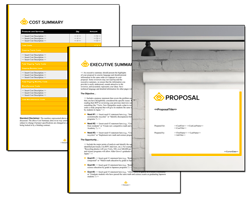
A research funding request proposal plays an important role in securing financial support for scientific and clinical research initiatives. The grant writing process involves developing a comprehensive project description, aligning with the specific requirements and guidelines of the selected funding agency, such as government agencies or private foundations. Successful grant applications require a detailed project narrative that clearly defines the project goals, objectives, and significance, as well as the research questions and methods to be addressed. Applicants, including principal investigators and research assistants, must explain how previous research and previous projects inform the proposed project, justify the budget section - including indirect costs and budget justification - and outline data management strategies.
A competitive grant proposal often incorporates an executive summary, an overview of outcomes, a timeline with a clear deadline, and a plan for progress reports and evaluation. Graduate students and students seeking training or education in research benefit from participation in grant programs by establishing partnerships, enhancing literacy in proposal writing, and gaining knowledge in compliance and data collection. Importantly, applicants should reflect on the mission and priorities of the funding opportunity, clarify their intent, and present ideas that address relevant country or global challenges. The writing process should emphasize the quality and validity of research, address feedback from funders, and incorporate guidance from the institution or office overseeing submissions.
Proposal Pack and its AI Writer facilitate the preparation and revision of grant applications by providing resources, templates, and checklists for proposal writing. These tools help applicants assemble complex documents, find examples, and ensure that important key elements - such as the budget, project narrative, methods, and references - are addressed in compliance with funding agency standards. By using such resources, researchers can improve the likelihood of creating a successful grant application that advances science, medicine, transportation, or other fields, while also serving the institution, such as a university, and contributing to education and knowledge. Ultimately, effective grant writing and submission establish the foundation for a project s success, enabling researchers to achieve impactful outcomes and secure additional funding for future endeavors.
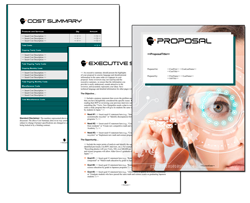
In preparing grant proposals, researchers and applicants must focus on addressing the aims and objectives outlined by the funding agency, while also providing a thorough explanation of the project s contribution to the field. The process of preparing and submitting proposals requires careful attention to language and clarity, ensuring that reviewers can easily verify the information and understand the project s significance. Graduate students and faculty at institutions often benefit from guidance and services offered by their university s research office, which can provide assistance in revising drafts, consulting on compliance, and sharing other resources that enhance the proposal s quality.
Importantly, the act of submitting proposals is not just about seeking an award, but about communicating the value and intended outcomes of a project, whether it serves children, advances scientific philosophy, or addresses pressing societal challenges. Proposal Kit aids in this phase of the process by offering extensive template libraries and automated document assembly, which help applicants administer, track, and update the project's status with efficiency. By providing sample language and structured templates, Proposal Kit allows users to revise and tailor their proposals to fit specific funding opportunities and deadlines.
For applicants deciding how best to present their findings and answer reviewers questions, access to additional information and examples is important. Proposal Kit s content helps users clarify their intent, justify their approach, and outline the various project phases, from initial aims to the anticipated date of completion. The inclusion of services such as an AI Writer further supports applicants in generating clear and persuasive narratives, which is particularly valuable for those less experienced in proposal writing.
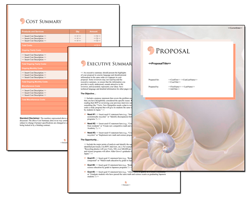
Ultimately, the ability to submit well-prepared proposals can have a lasting impact on a project's success, the status of the research institution, and the overall advancement of knowledge. By using comprehensive tools and seeking feedback to revise proposals, applicants ensure their work can serve as a reference for other types of projects, fostering a sense of collaboration and ongoing contribution to their field.
When researchers, including graduate students from institutions, decide to submit proposals for research funding, they take an important step toward shaping the future of their fields. The process to submit proposals is not only a formal requirement, but it also provides an opportunity for applicants to showcase their expertise, innovative ideas, and readiness to contribute to scientific advancement. Importantly, timely submission allows applicants to meet the specified deadline and respond to any notice or feedback from the funding agency, thereby improving the chances for the project to be awarded and successfully implemented.
Graduate students, in particular, gain important experience and practical knowledge by engaging directly in the grant proposal process - learning how to create compelling arguments, justify research needs, and meet compliance standards. This involvement prepares them for future roles as independent researchers and principal investigators. Institutions in research-focused communities often provide structured support and resources to help students and faculty navigate the complexities of preparing and submitting proposals, further increasing the likelihood of project success.
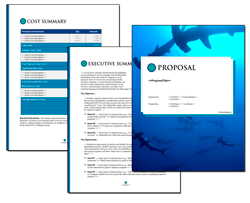
As researchers and applicants decide how to proceed at each stage of the submission process, they should remain attentive to notices from funders, which can contain critical information about the proposal s status or additional requirements. Promptly addressing such communications demonstrates professionalism and a commitment to the project s aims. Altogether, the careful preparation and submission of proposals by graduate students and faculty not only advance individual projects but also reinforce the research mission and reputation of their institutions.
Research Funding Request Proposal - The Narrative
Great Barrier Reef Damage Study
Please accept this application for a $40,000 USD grant to fund a study of the damage done to the Great Barrier Reef by the grounding of the vessel Xerxe5 in 20xx. We believe that it is crucial to analyze and document such reef damaging incidents and publish results and recommendations for the benefit of the international community. We believe the estimates we’ve enclosed will be valid for approximately six months.
Any monies received but not actually expended for our study will be contributed to our nonprofit organization for further research. We hope to receive funding and begin our study soon. On April 4th, 20xx, the transport ship, Xerxe5, ran aground within the Great Barrier Reef natural refuge. Healthy Seas Forever is seeking funding to travel to the reef, gather data and perform experiments to determine extent of damage to the reef.
Results will be used to assist the reef in recovery and how to prevent similar damage in the future. We will contact you shortly to follow up with this request as our window of opportunity to study the newly damaged site is very narrow. We have identified the following issue to be investigated. What is the extent of the damage to the coral reef caused by the tanker collision.
On April 4th, 20xx, the transport ship, Xerxe5, ran aground within the Great Barrier Reef natural refuge. Although we know that damage was done to the reef and fuel was spilled, we do not now understand the extent of the environmental damage, so we cannot develop an effective recovery plan or make recommendations for avoiding this type of situation in the future. See the Research section of this proposal for information about tasks to be carried out to resolve this question. To determine the extent of the damage done to the reef by the grounding of the vessel Xerxe5, we still study the following data.
Existing data – We have the reports of the grounding accident, the reported position, the damage to the ship, and the estimates of lost fuel and cargo. Collected data – We anticipate collecting more exact mapping data with our dive teams and research vessel, as well as up to 100 samples of surface plants animals, up to 100 samples of sand in the damage area, and up to 100 samples of water taken near the surface of the reef. All samples will be examined and tested for contaminants. Exact numbers of data and samples may vary because we do not currently have an accurate description of the extent of the damaged area.
See the Mapping page for more information about how divers will create an accurate map and gather samples. See the Experiments page for more details on tests to be conducted. To understand how much damage has been done to the reef, it’s crucial to have a good map of the area. We will begin with the latest topographic map of the seafloor created by sonar imagery in 1999.
Using GPS units on the dive boat, we will position our vessel at the coordinates first reported by the grounded vessel to begin our survey.
Methodology
The dive vessel will drop a team of three divers into the water. One diver will be equipped with the new UnderSeaPC Computer, which will display the topographic map overlaid with a writable plastic sheet. This diver will mark the visibly damaged area on the map and number positions where photos are taken. The second diver will be equipped with an underwater camera, and will be responsible for taking photos.
The third diver will carry sample bags and tools to take samples of visibly damaged plants, surface sands, and water immediately above the reef to check for contaminants. Any tiny animals that appear to be damaged by the collision will also be collected. The third diver will be responsible for marking positions at which samples are taken on the map, and for numbering samples accordingly.
The dive team will conduct their investigation for 50 minutes or until they are running low on air, at which time they will mark their position on the reef with an anchored balloon, and surface. The dive vessel will retrieve the divers at this new location, noting GPS coordinates and correlating them on the map. Dive team #1 will confer with Dive Team #2, and then spend the next hour writing reports of their observations.
While Dive team #1 rests and records their observations, Dive team #2 will enter the water and begin their survey at the point that the first dive team surfaced. They will perform the same tasks as Dive team #1 in the adjacent area of damage.
Schedule
Each dive team will do three dives per day, weather and sea conditions permitting. We anticipate that mapping and collecting samples will take 2-3 days.
Results
A detailed map showing the current condition of the reef will be created for future use. This map will be available to the international marine community. See Experiments for a description of tests to be performed on the collected samples. Samples of surface plants, sands, and water will be subjected to the following tests in our lab in Cairns.
Water analysis
Divers will collect water samples close to the surface of the reef. These samples will be analyzed for petroleum, coal dust, toxic paint, and other pollutants discharged by the vessel when it ran aground. Examination testing of damaged plants and animals.
Divers will collect visibly damaged surface plants and animals. These will be examined by biologists in our laboratory and their conditions documented. Chemical tests will also be performed to determine if these samples have been contaminated with petroleum, coal dust, toxic paint, or other pollutants discharged by the vessel when it ran aground. Examination testing of sands.
Samples of sand in and adjacent to the visibly damaged area will be collected and tested for petroleum, coal dust, toxic paint, and other pollutants. Following all tests, we will publish a report documenting the extent of damage done to the reef and correlating that damage with our map. We will also issue recommendations on how to assist the reef in recovery and how to prevent similar damage in the future. Under optimum conditions, our study to determine the extent of damage to the reef should take only a few days.
However, we want to point out the following variables that could extend our timetable and costs.
Weather Sea Conditions
We will schedule our mapping and sample collection expedition to the reef using the best forecast tools available for the area. If weather conditions and surface conditions are calm, our research vessel will remain in place for as long as it takes to complete the mapping and sample collection. However, if conditions change while the vessel is at the reef, we may need to return to port and come back another day, which would mean additional expenditures of time and money. If weather conditions keep us in port for multiple days, we could incur additional costs for meals, dock fees, and other expenses.
Extent of Reef Damage
At this time, we have only a rough estimate of the extent of the damage to the reef. If the damaged area proves to be much larger or deeper than we anticipate, extra time will be needed for mapping and sample collection.
Availability Health of Dive Team Scientists
Our two dive teams are made up of six experienced divers, who are all qualified marine biologists or oceanographers. They will map the area, collect the samples, test the samples, then create reports and issue recommendations. In the event that one or more team members is injured or becomes ill, the study schedule could be affected.
Travel Expenses
We will strive to keep our travel expenses low, as indicated in the included Estimated Cost Summary. However, if costs increase for travel expenses and marine fuel, our expedition costs will increase accordingly.
Functionality of Equipment
We are dependent on our dive vessel, our dive equipment, and our computers. We carry some spare equipment, but in the unexpected event of damage to a vital piece of equipment, our research study schedule could be impacted. We will use best practices to ensure the safety of our team and our equipment, and we will strive to carry out our research project as efficiently and professionally as possible.
Personnel Expenses Price. 6 Diver Scientists @ $700 day each for 5 days $21,000.00. 3 Person Boat Crew @ $900 day total for 3 days $2,700.00. Total Personnel Costs $23,700.00.
Marine fuel $600.00. Research vessel rental @ $1500 day for 3 days includes meals & $4,500.00. Rental of Cairns marine laboratory facilities @ $700 day for 2 days $1,400.00.
6 air tickets for diver scientists L.A. to Sydney Australia @ $4,200.00. Travel cost from Sydney to Cairns for 6 diver scientists @ $900.00. Meals not included on ship $1,000.00.
Three hotel rooms for 6 diver scientists @ $175 night for 2 nights $1,050.00. Report Writing & Reproduction Costs $1,500.00. TOTAL ESTIMATED STUDY $38,850.00.
Standard Disclaimer. The numbers represented above are to be used as an estimate for this project. The above Cost Summary in no way constitutes a warranty of final costs.
Estimates are subject to change if project specifications are changed or costs change due to variables beyond our control. Please see the Variables page for discussion of these variables.
 What Our Clients Say
What Our Clients SayI have been using Proposal Pack and Proposal Wizard since 2010. Both are great stand alone products, but they have better efficiency when used together. The Proposal Wizard integrates very well with Microsoft Word and Windows. Writing proposals are easier and faster with this product. All you have to do is choose from the menu and the program formats the proposal pages for you. I write grants for non-profit agencies. I have written over 100 proposals using this product. I have 100% satisfied customers often with repeat business."
Bainbridge
There are 200 complete sample proposals including this one in each Proposal Pack
The following related samples are also included in Proposal Pack:
These template layouts are related to this sample
The following related templates are also included in Proposal Pack with this sample:
- Research Proposal (Long)
- Research Proposal (Short)
- Extinction and Climate Change Study
- Climate Change Research Proposal
- Research Assistant Proposal
- Medical Research Project Funding Proposal
- Artificial Intelligence Project Funding Proposal
- Drug Synthesis Project Funding Proposal
- Medical Clinic Project Proposal
- In-House Lab to Save Costs and Protect Trade Secrets Proposal
- Logistics Research Project Proposal
- International Research and Development Project Proposal
- Research Expedition Grant Funding Request
- Grant Funding Request Proposal
- AI Based Matchmaking App Proposal Template
- AI Content Creation For Web Site SEO Proposal Template
- AI Content Moderation Proposal Template
- AI For Environmental Protection Proposal Template
- AI In Agriculture Proposal Template
- AI In Autonomous Vehicles Proposal Template
- AI In Entertainment Personal Recommendations Proposal Template
- AI In Fashion For Trend Forecasting Proposal Template
- AI In Gaming Proposal Template
- AI In Retail Customer Experience Proposal Template
- AI Personal Assistants For Productivity Proposal Template
- AI Relationships Proposal Template
- AI Website Builders Proposal Template
- FinTech Pilot Project Implementation Proposal Template
- FinTech Research and Development Funding Proposal Template
- Marketing Apps Proposal Template
Length of Sample
9 PagesThere are thousands of chapters to choose from in Proposal Pack. This sample uses the following set of Proposal Pack chapter templates: Cover Letter, Title Page, Problem Statement, Cost Summary, Experiments, Mapping, Variables, Data, Back Page.
Research Funding Request Proposal Calculator Spreadheets
These Excel calculator spreadsheets are included with this template. If you purchase a Proposal Pack or the Professional Bundle, these proposal pages are generated using an automated line-item database in the included Wizard software. The calculator spreadsheets are intended for use when purchasing only the sample as a static Word template.
This sample illustrates how to write the following types of proposals
- Non-technical proposal
- Project pitch proposal
- Non-government grant, non-profit, NGO proposal
- Nature, environmental proposal
- Research, science proposal
- Many other types of proposals
Samples can be created in any Proposal Pack design theme
This sample was created with Proposal Pack Minimalist #4. To change the visual look purchase any Proposal Pack and this sample will be created in that design theme.
Out of the over 501 Proposal Packs available these designs are also popular for this type of proposal and this sample proposal is also included in every Proposal Pack:
Photo Design Proposal Packs
 Proposal Pack Business #20
Proposal Pack Business #20 Proposal Pack Computers #5
Proposal Pack Computers #5 Proposal Pack Concepts #18
Proposal Pack Concepts #18 Proposal Pack Nature #11
Proposal Pack Nature #11 Proposal Pack Nature #7
Proposal Pack Nature #7 Proposal Pack Ranching #3
Proposal Pack Ranching #3 Proposal Pack Symbols #11
Proposal Pack Symbols #11Line Art Design Proposal Packs
 Proposal Pack Business #10
Proposal Pack Business #10 Proposal Pack Business #11
Proposal Pack Business #11 Proposal Pack Business #17
Proposal Pack Business #17 Proposal Pack Classic #10
Proposal Pack Classic #10 Proposal Pack Classic #6
Proposal Pack Classic #6 Proposal Pack Classic #8
Proposal Pack Classic #8 Proposal Pack Science #3
Proposal Pack Science #320% Off Discount
![]() Add To Cart This Word Template
Add To Cart This Word Template
 Add To Cart Proposal Pack Minimalist #4
Add To Cart Proposal Pack Minimalist #4
 Add To Cart Proposal Kit Professional Bundle
Add To Cart Proposal Kit Professional Bundle
 4.7 stars, based on 849 reviews
4.7 stars, based on 849 reviewsFrequently Asked Questions
How do I customize this sample to fit my specific project or business?
If you purchase this sample as a static template, it will be an editable Word format document; otherwise, if you buy a Proposal Pack or the Professional bundle, you can build a more customized editable Word document version of it using the included Wizard software. You can replace the sample information with your own, adjust the text to match your company's tone and style, and modify sections to include project-specific details. The included AI Writer will also customize the content for you.
Can I use multiple sample proposals for different types of projects?
You can purchase multiple samples as individual Word templates or all 200 samples are included in every Proposal Pack and Proposal Kit Professional, which is a much better deal. The Proposal Kit offers sample proposals for various industries and project types. You can select and customize different sample proposals to suit each unique project. This flexibility allows you to create tailored proposals for other clients or projects.
How can I integrate my branding into this sample?
While this sample is an editable Word document, depending on the level of custom branding needed, consider the Proposal Kit Professional, which includes the branding features in the Wizard software that let you create custom-branded design themes more effectively. Start by incorporating your company's logo on the cover page, as well as in the headers and footers of the document. Next, adjust the color scheme of the proposal to match your brand colors. Change the fonts in the proposal to align with your brand's standard fonts. Including branded graphics that reflect your brand's style will further enhance the proposal. Additionally, ensure that the text within the proposal maintains a tone and voice consistent with your brand's communication style. By integrating these elements, your proposal will reinforce your brand identity.
How do I ensure my proposal stands out and wins the client?
To ensure your proposal stands out:
- Personalize the content: Address the client's needs, challenges, and goals to make the proposal unique.
- Highlight your value proposition: Communicate what sets your business apart and how to deliver superior results.
- Use professional design elements: Incorporate visuals, charts, and graphs to enhance the presentation and make it more engaging.
- Proofread and edit: Ensure the proposal is error-free and well-organized. A polished, professional document reflects your attention to detail and professionalism.
What should I do if I need help understanding or modifying a section of this sample?
If you need help understanding or modifying a section of this sample, refer to the detailed instructions provided. Additionally, Proposal Kit includes customer support and resources such as tutorials and videos to assist you. Consulting with a colleague or a professional in your industry can also be beneficial if further clarification is needed. Asking an AI tool can also provide valuable insights for immediate needs. You can load this sample into the Wizard software and let its AI Writer customize the pages for you.
 Ian Lauder has been helping businesses write their proposals and contracts for two decades. Ian is the owner and founder of Proposal Kit, one of the original sources of business proposal and contract software products started in 1997.
Ian Lauder has been helping businesses write their proposals and contracts for two decades. Ian is the owner and founder of Proposal Kit, one of the original sources of business proposal and contract software products started in 1997.By Ian Lauder
 Published by Proposal Kit, Inc.
Published by Proposal Kit, Inc.


 Cart
Cart


 Facebook
Facebook YouTube
YouTube Bluesky
Bluesky Search Site
Search Site